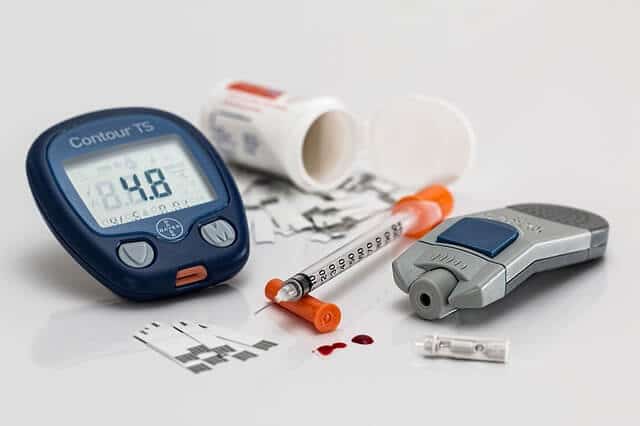Diabetes Introduction
To understand diabetes, it is important to first understand the normal process by which food is broken down and used by the body for energy. Several things happen when food is digested:
- A sugar called glucose enters the bloodstream. Glucose is a source of fuel for
the body. - The pancreas makes insulin. The role of insulin is to move glucose from the bloodstream into muscle, fat and liver cells, where it can be stored or used as fuel.
High Blood Sugar
Diabetics have high blood sugar because their body cannot move sugar from the blood into muscle and fat cells to be burned or stored for energy. Their livers release too much glucose into the blood. This is because either:
- Their pancreas does not make enough insulin
- Their cells do not respond to insulin normally
- Both of the above
Types of Diabetes
There are two major types of diabetes with different causes and risk factors:
- Type 1: can occur at any age, but it is most often diagnosed in children, teens, or young adults. In this disease, the body makes little or no insulin. This is because the pancreas cells that make insulin stop working. Daily injections of insulin are needed. The exact cause is unknown.
- Type 2: is much more common. It most often occurs in adulthood, but because of high obesity rates, teens and young adults are now being diagnosed with this disease. Some people with type 2 do not know
they have it. - There are other causes of diabetes, and some patients cannot be classified as type 1 or type 2.
Gestational diabetes is high blood sugar that develops at any time during pregnancy in a woman who does not have diabetes.
Risk Factors for Diabetes
If your parent, brother or sister has diabetes, you may be more likely to develop the disease.
Eating too much sugar won’t cause diabetes. But it may make you overweight, which can put you at risk for diabetes. Being overweight makes it harder for your body to properly use insulin. Losing excess weight and being active can help prevent or reverse insulin resistance.
You can be diabetic for years and not know it. That’s why it’s important to talk with your doctor about whether you should have diabetes-screening tests. People with high blood pressure, who are over age 45, and those who are overweight and have other risk factors should consider being tested.
A high blood sugar level can cause several symptoms, including:
- Blurry vision
- Excess thirst
- Fatigue
- Frequent urination
- Hunger
- Weight loss
Because type 2 diabetes develops slowly, some people with high blood sugar have no symptoms.
Symptoms of type 1 diabetes develop over a short period. People may be very sick by the time they are diagnosed.
Serious Problems for Diabetics
After many years, this disease can lead to other serious problems. These problems are known as diabetes complications, and include:
- Eye problems, including trouble seeing (especially at night), light sensitivity,
and blindness - Sores and infections of the leg or foot, which untreated can lead to amputation of the leg or foot
- Damage to nerves in the body, causing pain, tingling, a loss of feeling, problems digesting food, and erectile dysfunction
- Kidney problems, which can lead to kidney failure
- Weakened immune system, which can lead to more frequent infections
- Increased chance of having a heart attack or stroke
Solutions for Diabetes
Type 2 diabetes may be reversed with lifestyle changes, especially losing weight with exercise and by eating healthier foods. Some cases of type 2 can also be improved with weight-loss surgery.
There is no cure for type 1 diabetes. Treating either type 1 or type 2 involves medicines, diet, and exercise to control blood sugar level.
Getting better control over your blood sugar, cholesterol and blood pressure levels helps reduce the risk of kidney disease, eye disease, nervous system disease, heart attack and stroke.
Keeping an ideal body weight and an active lifestyle may prevent or delay the start of type 2. Type 1 cannot be prevented.
To prevent diabetes complications, visit your health care provider at least two to four times a year. Talk about any problems you are having. Follow your healthcare provider’s instructions for managing your diabetes.


